A Guide to Visiting the Alhambra in Granada, Spain

Few places in Europe capture the imagination quite like the Alhambra.
Sitting on top of a hill in the Andalusian city of Granada, this large complex of palaces, gardens, and fortress walls is not just a magnificent example of Moorish architecture, but also a symbol of centuries of cultural fusion and drama.
Declared a UNESCO World Heritage Site in 1984, the Alhambra attracts millions of people each year, eager to wander its ornate halls, marvel at its intricate stucco work, and soak in panoramic views of Granada and the Sierra Nevada mountains.
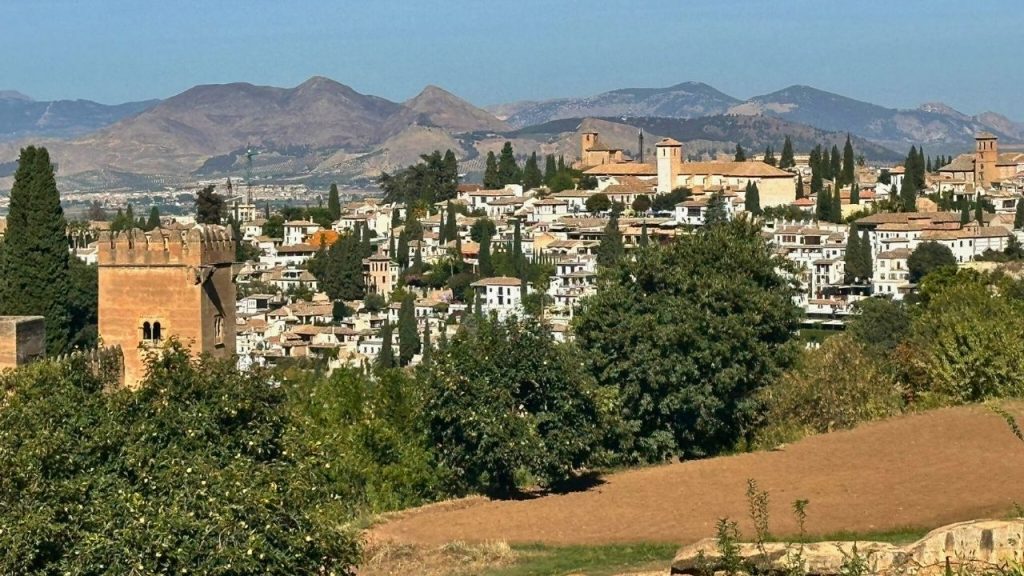
The Alhambra deserves a spot on your travel bucket list, especially if you love fascinating history, architechture, and centuries old tales.
My husband and I visited the Alhambra from Málaga, Spain via train. It was an easy two-hour train ride with one transfer. At the end of the article, I’ll tell you how to get tickets because they sell out months ahead. And after visiting this incredible piece of history that is on many people’s bucket list, it was worth the journey and the price!
A Quick History of the Alhambra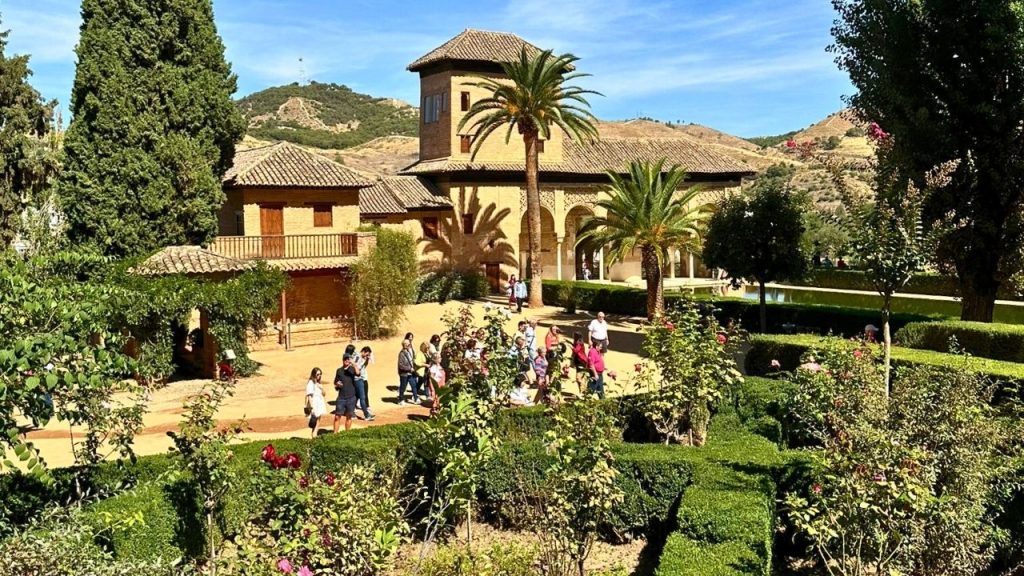
The Alhambra’s story goes back over a thousand years. Although there’s evidence of earlier fortifications on the hill, the Alhambra as we know it began to take shape in the mid-13th century when Muhammad I, the first Nasrid ruler of Granada, established it as a royal residence and fortress.
Over the next century and a half, successive Nasrid kings expanded the complex, creating one of the most refined and beautiful palatial cities in the medieval world. Its intricate stucco walls, honeycomb vaults, and serene courtyards were designed to impress and to create a paradise on earth.
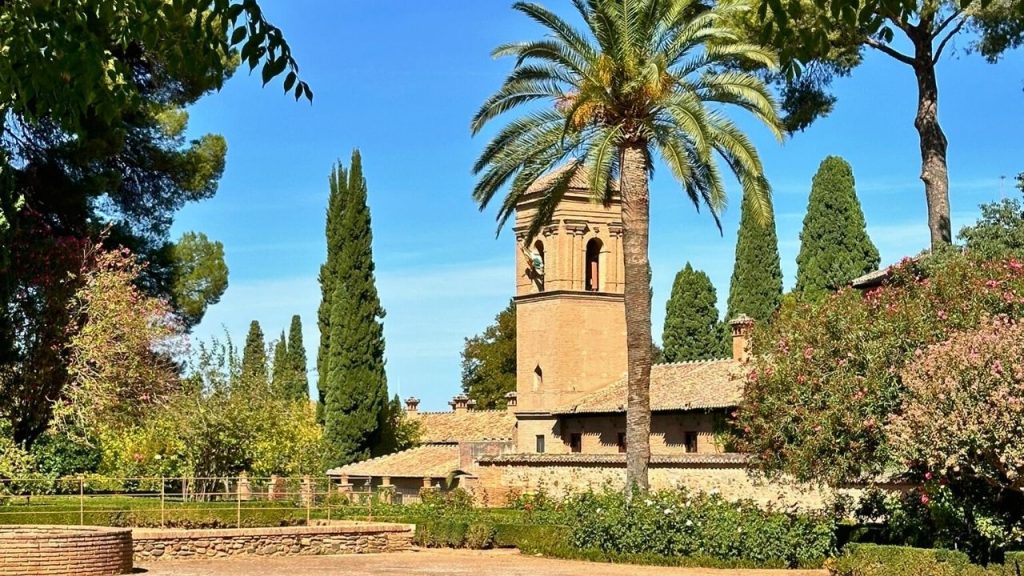
In 1492, the Catholic Monarchs Ferdinand and Isabella conquered Granada, bringing an end to Muslim rule in Spain. They took up residence in the Alhambra and made modest alterations, while later monarchs, including Charles V, added Renaissance touches.
Over the centuries, the Alhambra suffered periods of neglect, particularly during the Napoleonic Wars, when parts of it were damaged or destroyed. Restoration efforts began in the 19th century and continue to this day.
Although often referred to as a single palace, the Alhambra is actually a complex of distinct areas. Here’s what you shouldn’t miss:
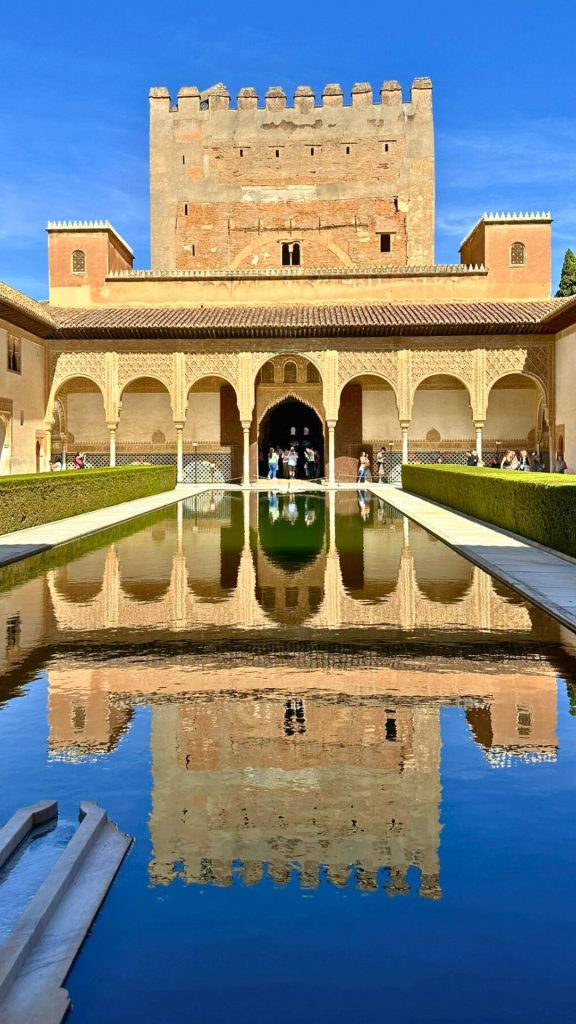
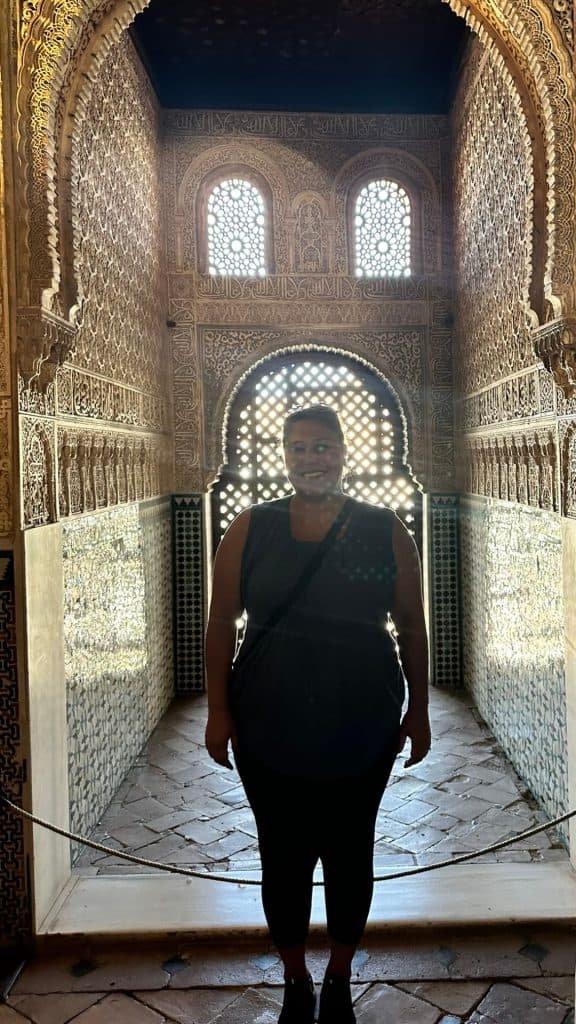
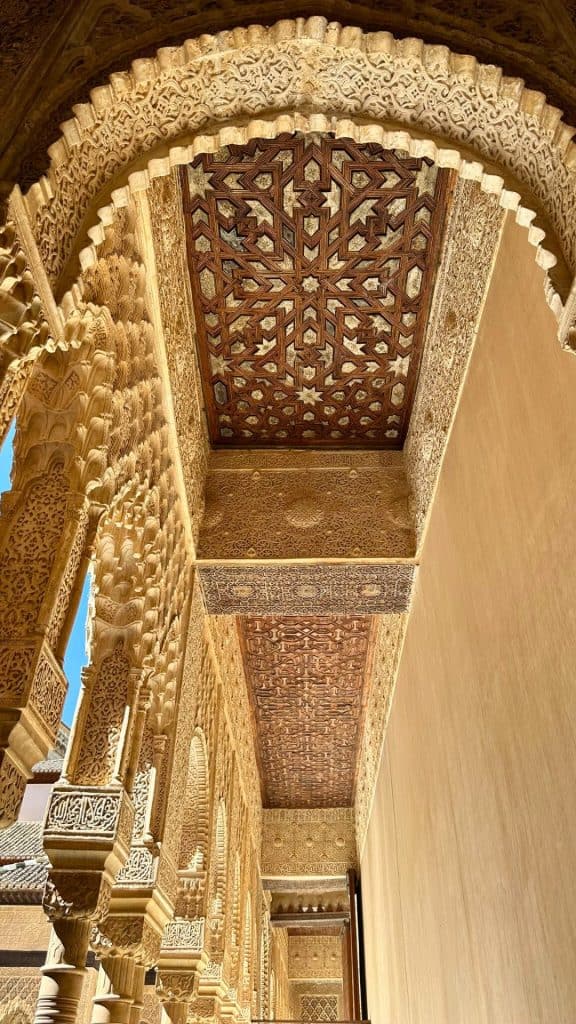
Arguably the crown jewel of the Alhambra, the Nasrid Palaces are a series of interconnected halls, chambers, and courtyards built by the Nasrid rulers.
These palaces are an architectural and artistic triumph, showcasing some of the finest Islamic art and craftsmanship in Europe. Highlights of The Nasrid Palaces include:
- The Comares Palace: Home to the Hall of the Ambassadors, the largest room in the Alhambra, with dazzling wooden ceilings and intricately carved plasterwork.
- Patio de los Arrayanes: It sits at the heart of the Comares Palace and is one of the most breathtaking and photographed spots in the entire Alhambra complex with a gorgeous reflection pool.
- The Palace of the Lions: Famous for its stunning Court of the Lions, an elegant courtyard surrounded by slender columns and a central fountain supported by twelve marble lions, a masterpiece of Islamic art.
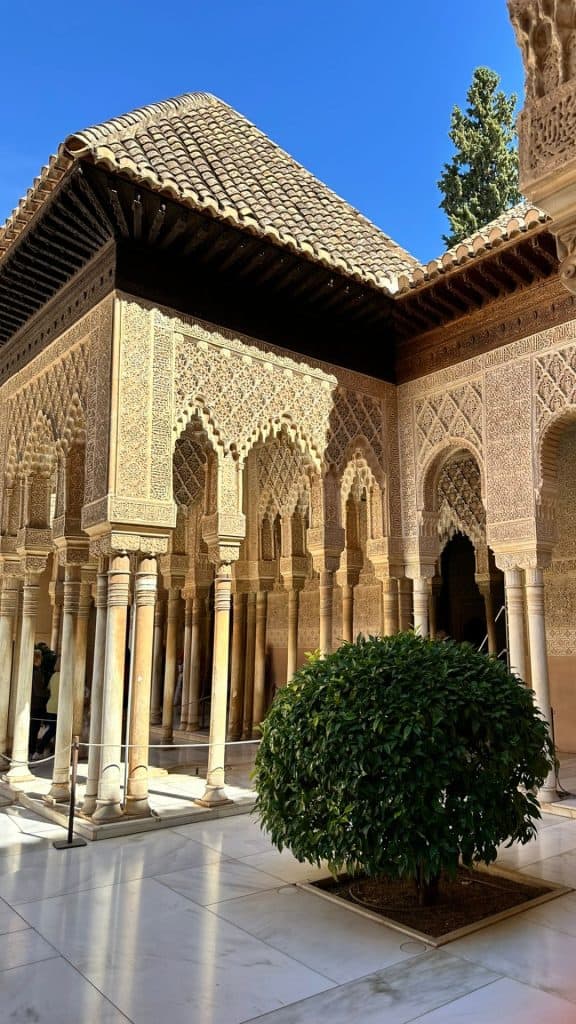
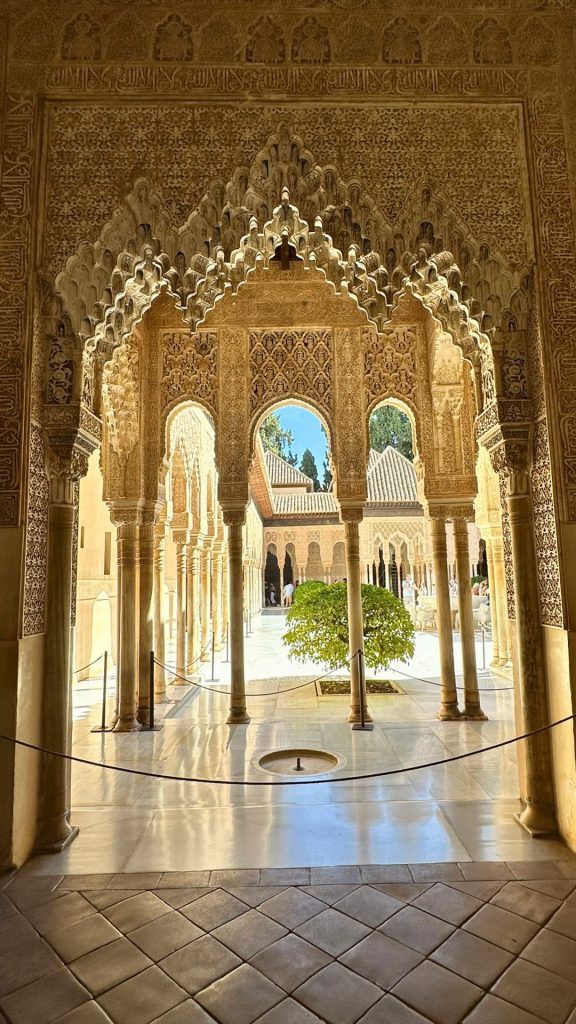
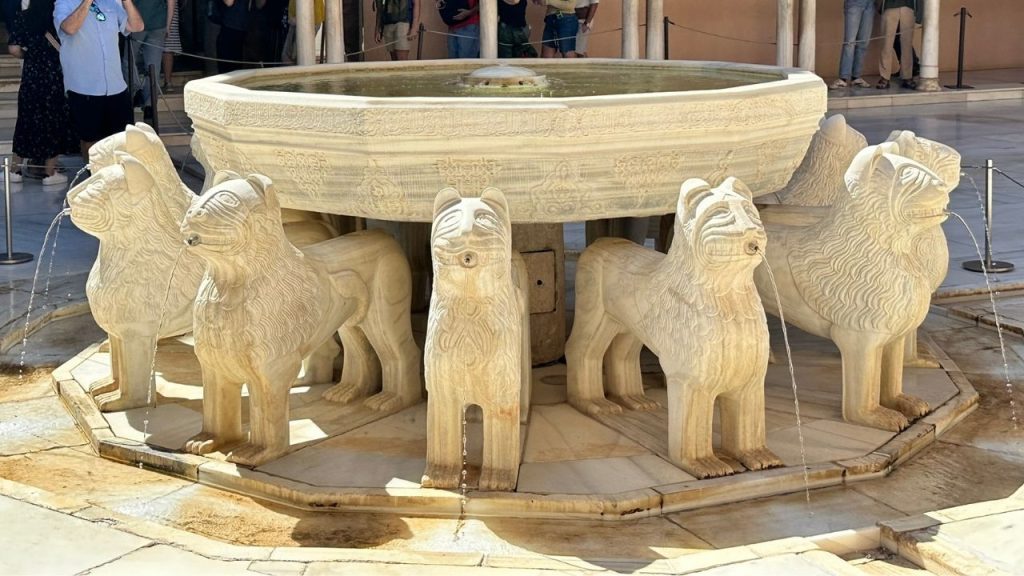
Walking through these palaces is like stepping into another time and world. Sunlight filters through delicate latticework, water flows gently in shallow channels, and every wall seems alive with geometric patterns and Arabic inscriptions.
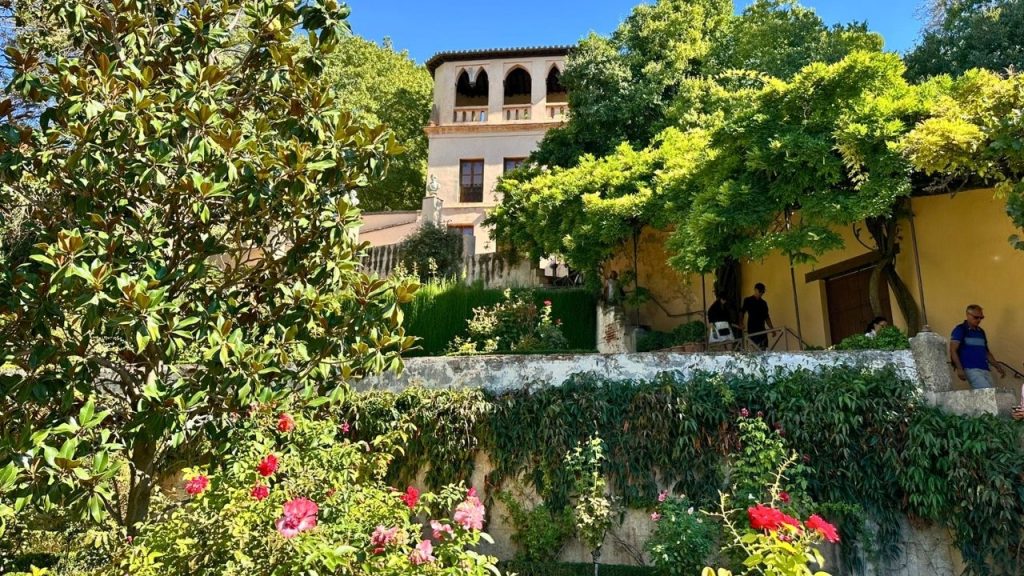
The Generalife was the Nasrid rulers’ leisure retreat, essentially a place to escape the formality of court life. Its name comes from the Arabic phrase Jannat al-‘Arif, meaning “Garden of the Architect” or “Gardens of Paradise.”
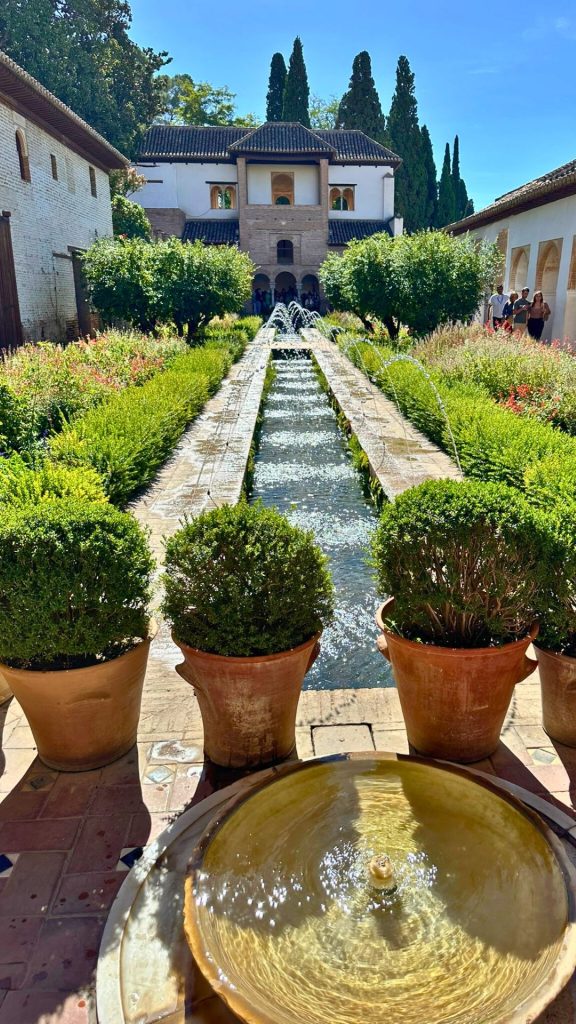
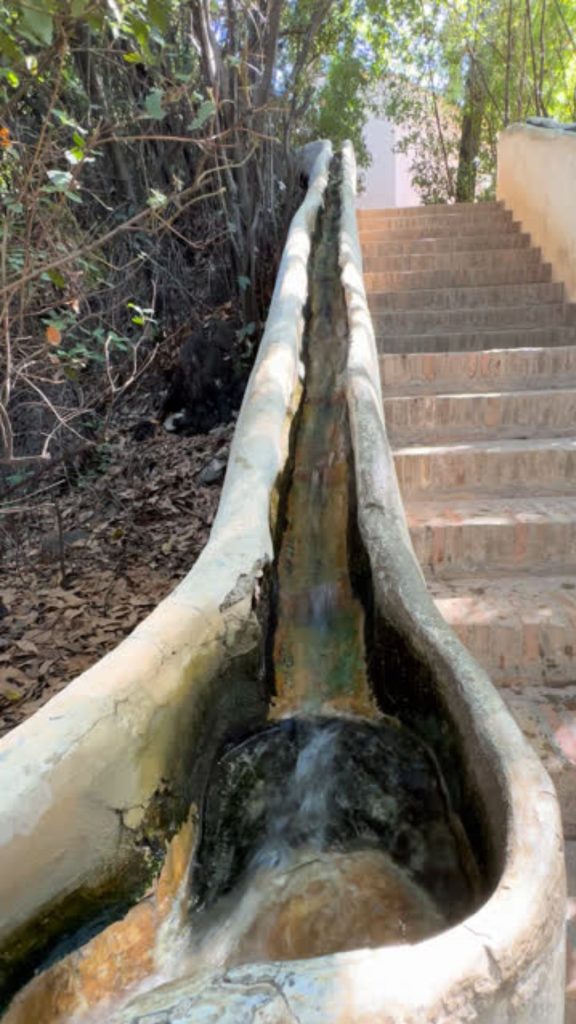
You can wander through terraced gardens, past bubbling fountains, manicured cypress hedges, and beautiful flower beds. Highlights of The Generalife include:
- The Patio de la Acequia, a beautiful garden where a long pool reflects arches.
- The Upper Gardens offer gorgeous views back toward the Alhambra.
- The Escalera del Agua, a staircase with water running down the balustrades—a perfect blend of engineering and beauty. Our tourguide explained that this is part of a larger water system that flows throughout the Alhambra drawing water from the Darro River.
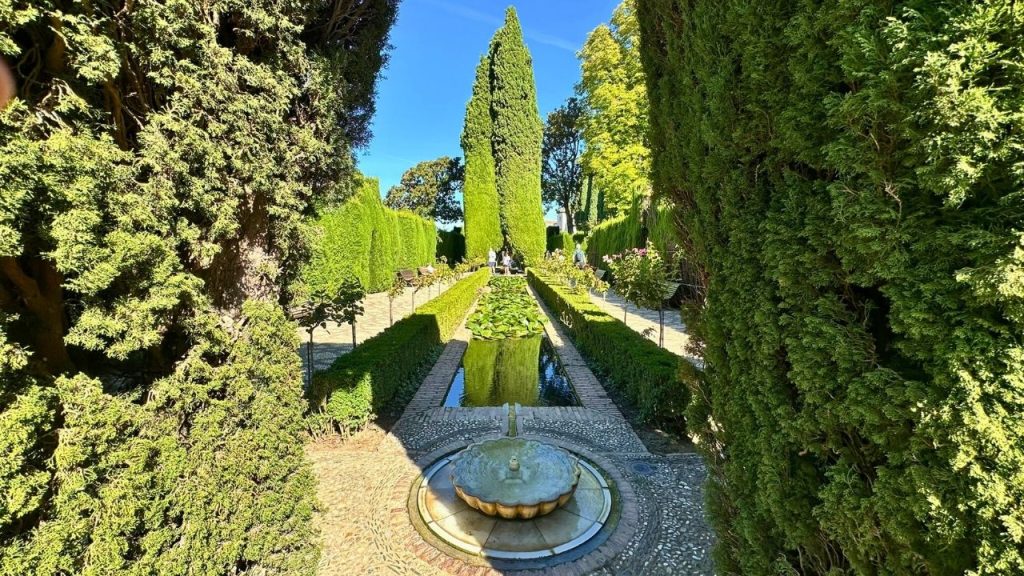
The Generalife gardens are especially beautiful in the spring and early summer, when roses, jasmine, and other blooms fill the air with their fragrance.
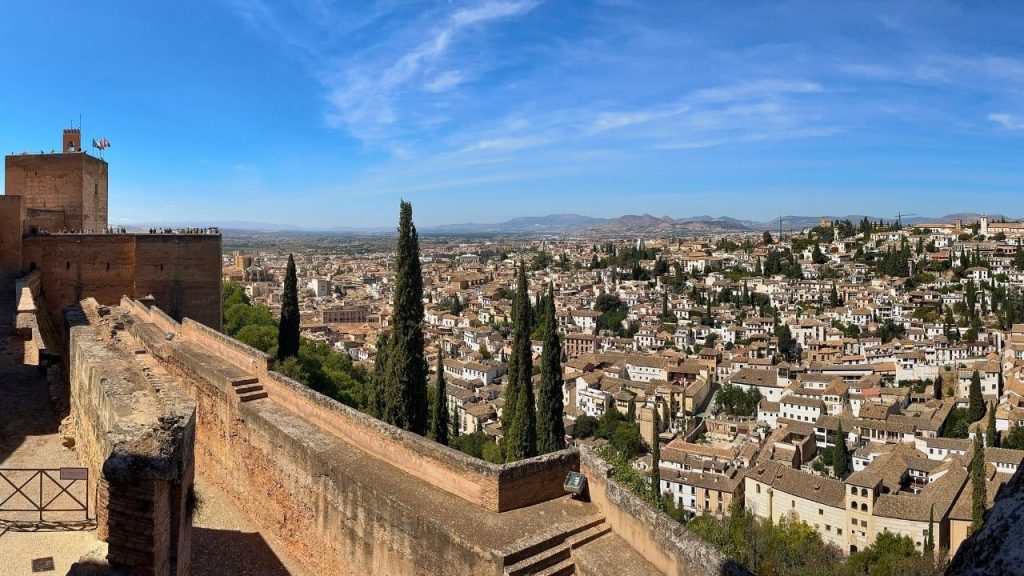
The Alcazaba is the fortress section of the Alhambra, and it’s the oldest part of the complex still standing. Its walls and towers guarded Granada against invasion.
Climb the Torre de la Vela (Watchtower) for one of the best views of the city, encompassing the Albaicín neighborhood, the plains beyond Granada, and the snowy peaks of the Sierra Nevada.
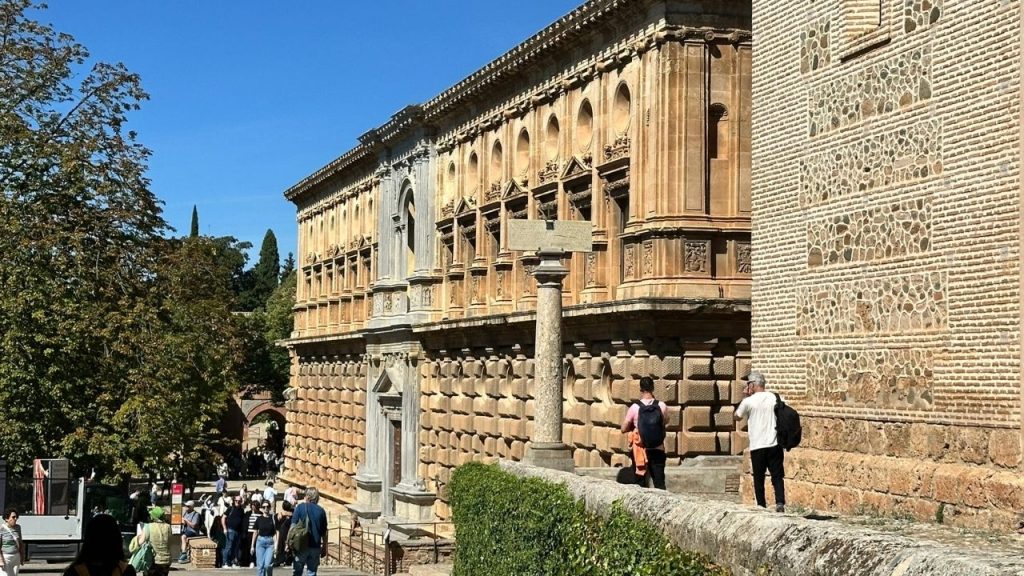
After the conquest of Granada, Charles V, Holy Roman Emperor, ordered the construction of his own Renaissance-style palace within the walls of the Alhambra.
Although somewhat controversial (some consider it an architectural intrusion), the Palace of Charles V is a masterpiece of Renaissance architecture.
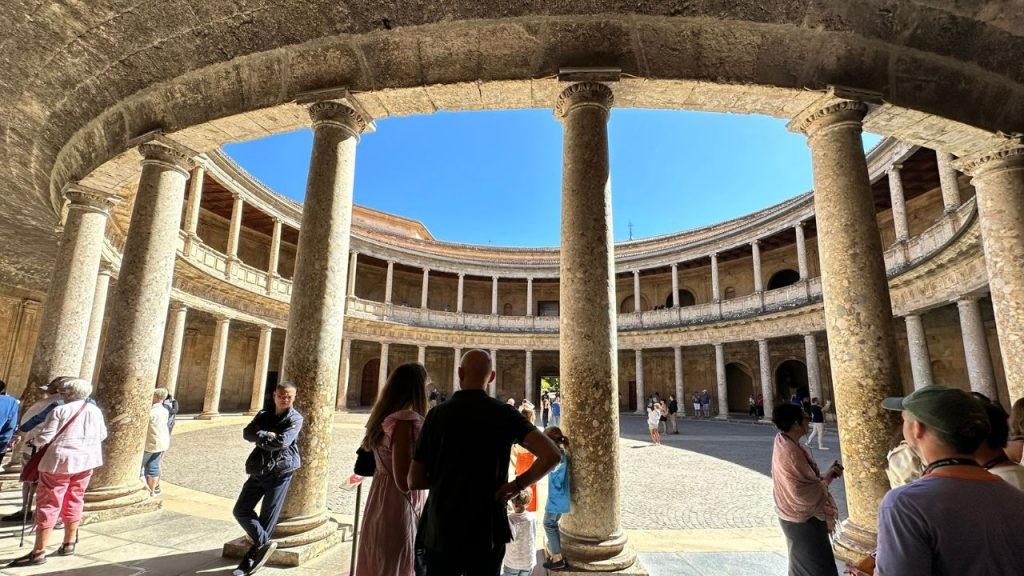
Its most striking feature is the circular courtyard ringed by two levels of elegant columns. Today, the palace is home to the Alhambra Museum, which showcases valuable artifacts from the Nasrid period, as well as the Fine Arts Museum of Granada.
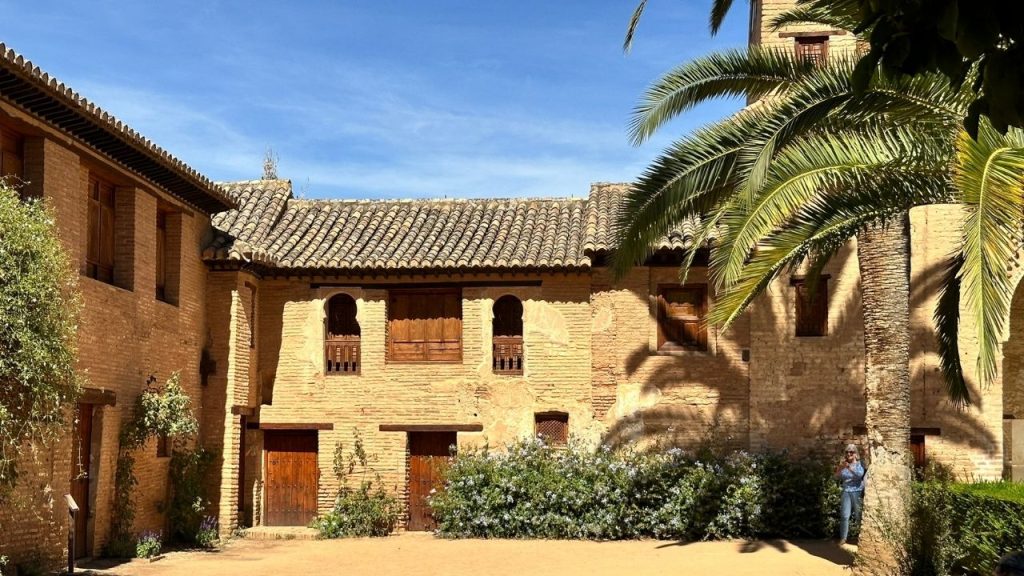
Not far from the Nasrid Palaces lie the Partal Gardens. This quieter area often sees fewer crowds and offers reflective pools, flower beds, and architectural fragments, such as the Portico of the Palace of Partal which is one of the oldest surviving structures in the Alhambra.
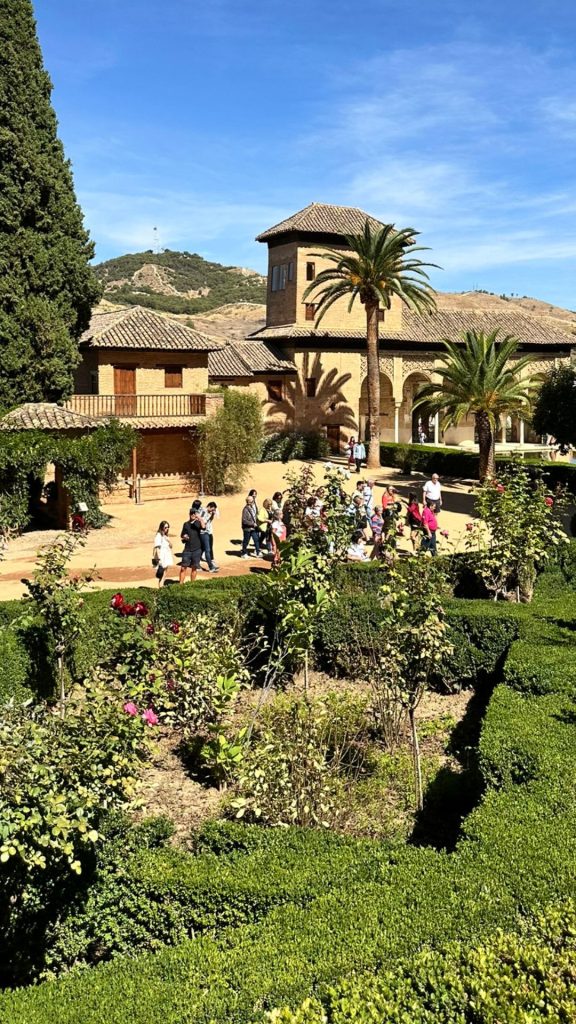
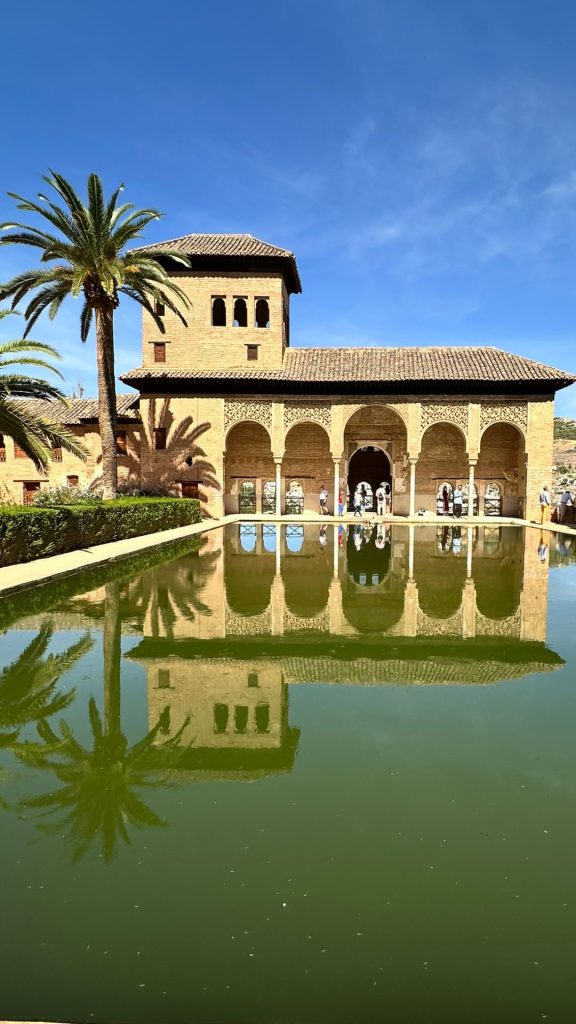
The combination of water, greenery, and architecture is easily one of the most photogenic scenes in the complex. It was absolutely stunning!

Since the Alhambra is one of Spain’s most popular attractions, planning ahead is crucial. Here’s how to make your trip smooth and memorable.
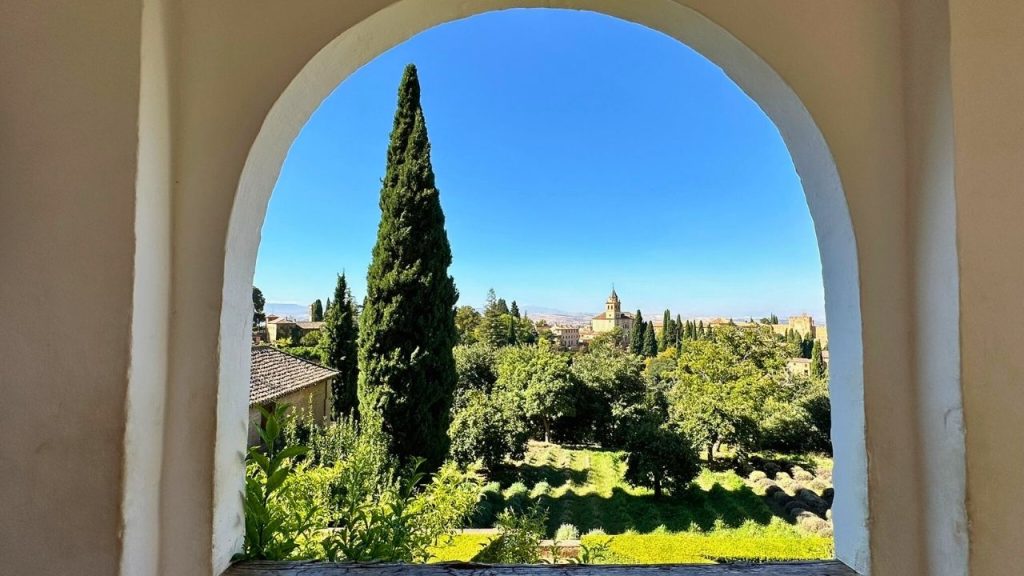
Tickets for the Nasrid Palaces are limited to control crowding, and they sell out weeks (sometimes months) in advance, especially in high season (spring, early summer, and autumn). The most common ticket types are:
- General Ticket: Includes the Nasrid Palaces, Generalife, Alcazaba, and Partal Gardens.
- Night Visit Ticket: Offers an atmospheric tour of either the Nasrid Palaces or Generalife illuminated after dark.
- Gardens Ticket: Excludes the Nasrid Palaces but allows access to other areas.
- Dobla de Oro: Combines Alhambra entry with other Islamic monuments in Granada.
Tickets can be purchased from the official Alhambra website (highly recommended) or authorized vendors. Your ticket will specify a timed slot for the Nasrid Palaces. Entry is strictly controlled, and late arrivals might not be admitted. A complete visit to the Alhambra takes at least 3–4 hours, but history enthusiasts might linger for half a day.
We attempted to purchase tickets a week before and they were sold out! Luckily, we scored a guided tour from an authorized vendor through Viator and were able to see the entire complex!
If you love history, I HIGHLY recommend this private guided tour. We were lucky enough to have a tour guide who not only studied the complex extensively, but who also spoken arabic and could translate many of the sayings on the wall.

Granada’s climate varies with the seasons. We visited in id-September and the weather was great! Whenever you go, early morning or late afternoon slots offer softer light and cooler temperatures.
- Spring (March–May): Ideal weather, blooming gardens, and fewer crowds than summer.
- Summer (June–August): Hot and crowded. Visit early or book a night tour.
- Fall (September–November): Pleasant temperatures and fewer tourists.
- Winter (December–February): Chilly but atmospheric, with snow often capping the mountains.
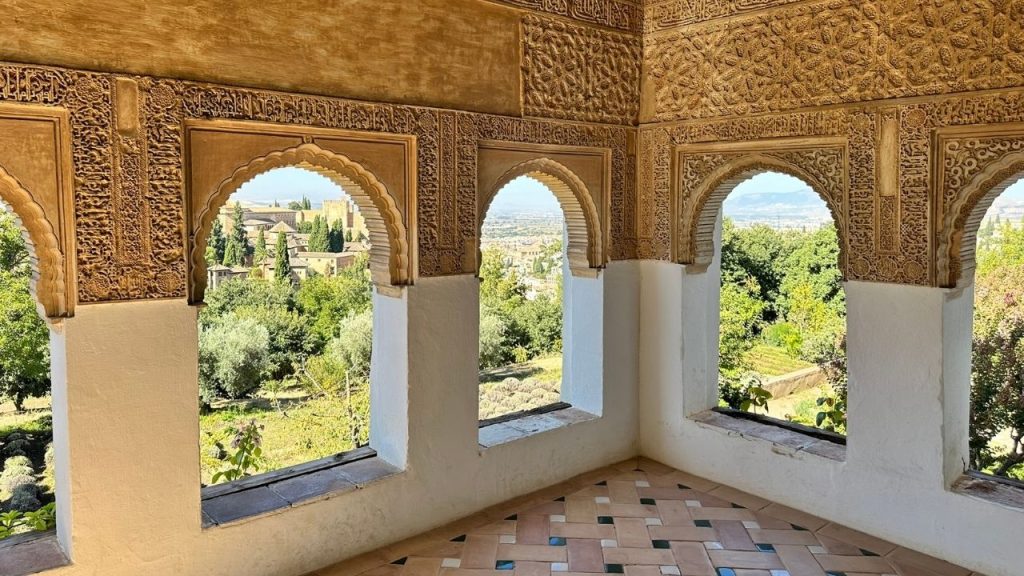
- Wear Comfortable Shoes: You’ll be doing a lot of walking over stone, gravel, and stairs.
- Bring Water: Granada’s sun can be intense, especially in summer.
- Photography: Tripods and flashes are prohibited inside most palaces.
- ID Required: Carry the ID used when booking tickets.
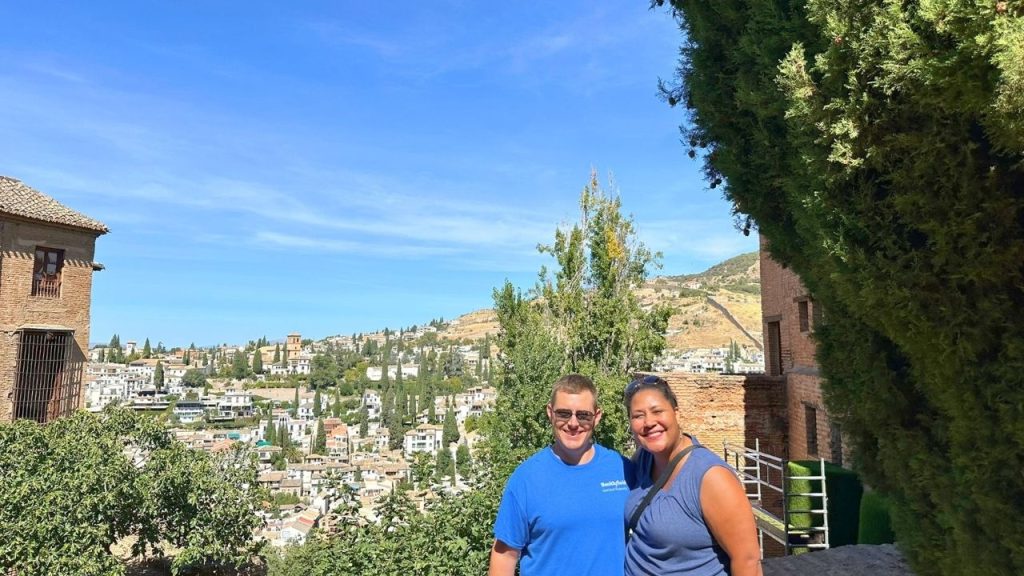
What makes the Alhambra so unforgettable is not just its architecture but its atmosphere. In this serene yet powerful place, the whispers of history seem to echo off every wall. It’s a monument to human creativity, resilience, and beauty, bridging cultures and centuries.
From the cool marble courtyards of the Nasrid Palaces to the fragrant gardens of the Generalife, visiting the Alhambra is an experience that lingers long after you leave.

wanderwithalex





